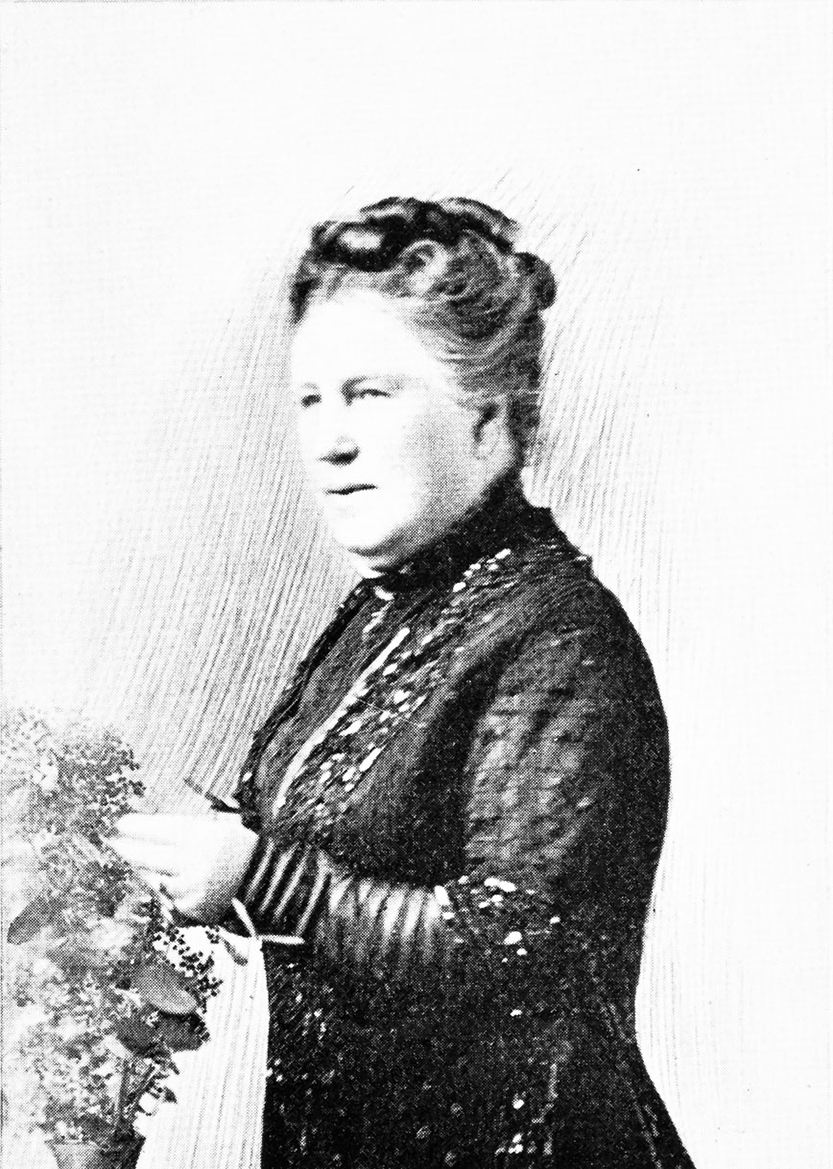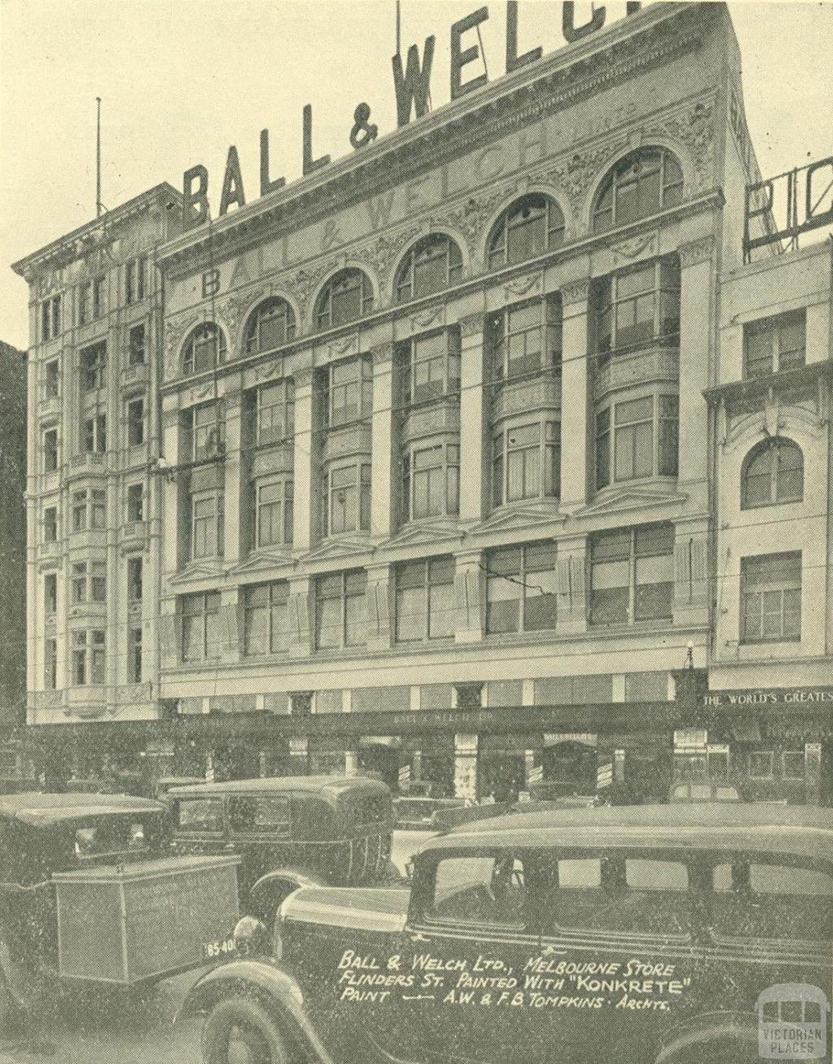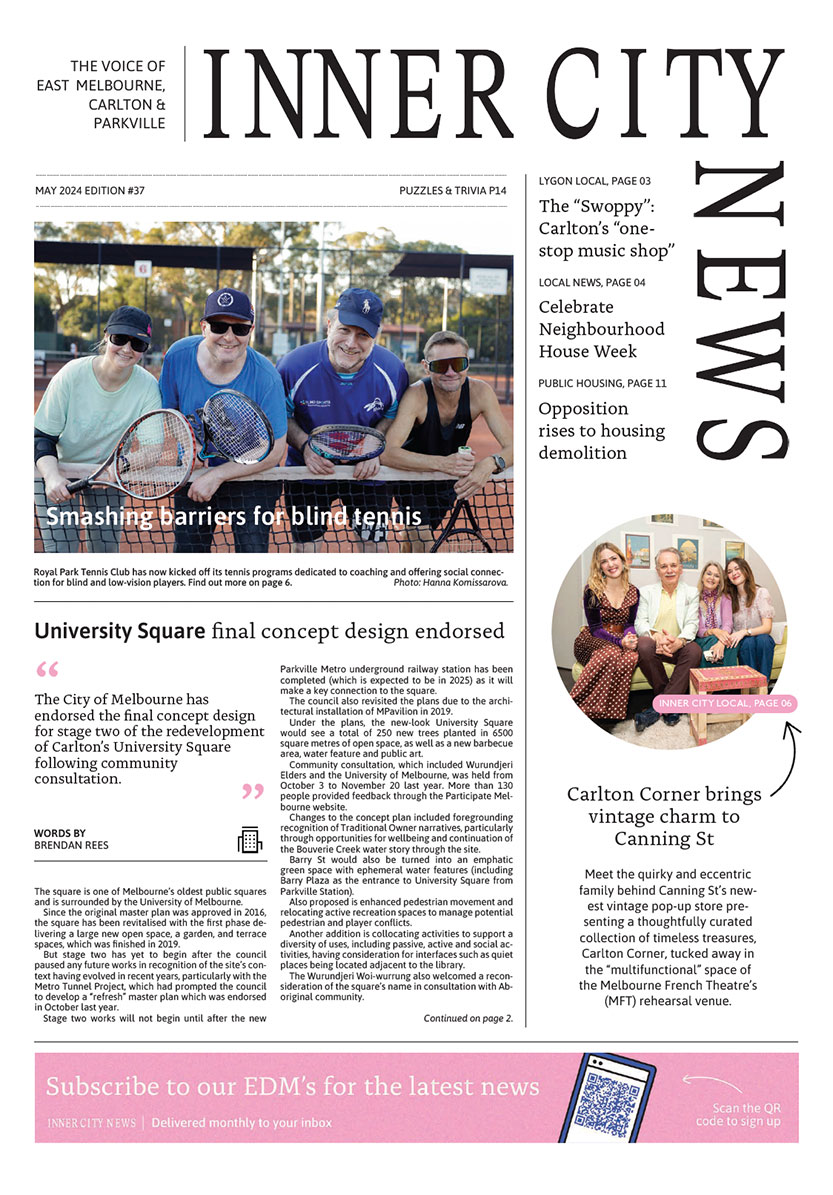A tale of two sisters
Ball and Welch was once one of Melbourne’s landmark department stores, along with others such as Buckley and Nunn. History tells us that the store was founded by Charles Ball and his nephew, William Henry Welch. But perhaps there is more to the story …
It is likely that their wives had more than a little to do with the store’s establishment. Coincidentally they were also well-known residents of East Melbourne and Jolimont.
Tabitha and Eliza Reardon were born in Melbourne in the early 1840s. They grew up in Collingwood and there it seems they met their future husbands. Tabitha married Charles on May 10, 1862, and about three weeks later Eliza married William. Both couples settled in Vaughan, a busy mining town near Castlemaine.
The Balls had five of their six children there, while the Welch couple remained childless. Vaughan also was the birthplace of Ball and Welch. When Miss Effie Ball, the youngest of Tabitha’s daughters, died, a report in The Herald of January 23, 1945 claimed that:
“Mrs Ball and Mrs Welch really started the drapery store. They used to import silks and fashionable furbelows from London and their women friends in the thriving township [of Vaughan], which once had a population of 25,000, used to say. ‘Oh, please get me some next time you send to England!’ Thus, the store began, and it prospered for many years”.
The two men had been drapers and silk mercers back in England, but on arrival in Melbourne about 1853 it seems they had been living in retirement until shortly before their marriages. It is not hard to imagine that the two women, and a ready market, provided considerable encouragement in establishing the new enterprise.
In 1874 the firm established a second store in Carlton and the families moved back to the city. Charles Ball died at his home in Drummond St, Carlton in 1876, four months before the birth of his youngest child.
Yet the women continued to take an active part in the business and to make regular visits to the original store.
The Herald report goes on to say:
“When Vaughan went into a decline, Ball and Welch moved to Castlemaine on September 1, 1882. and here Mrs Ball and Mrs Welch, ‘tall and gracefully gowned like fashion plates,’ presided over the millinery and costume department. They wore Princess robes of soft grey merino with long trains; and trimmed with a row of knotted silk to form a coat line with two pockets at the back with fringe”.
About 1884 Tabitha moved to Jolimont where she bought Jolimont Square, two acres of land on which stood five timber houses, and a sixth brick one facing Wellington Parade. It was named Mornington, and this is where Tabitha and her children made their home.
In 1902 Tabitha made the decision to upgrade. She built a new house in the other corner of the square, also facing Wellington Parade. This new house was known as Redcourt. Three of Tabitha’s children, including Effie, moved with her. Meanwhile, William Welch had died in 1896 and once Redcourt was completed Eliza moved in with her sister. The house was conveniently close to their store recently established in Flinders St.
Eliza soon began to understand the investment opportunities that East Melbourne offered and began buying property. By the time she died in 1916 she owned two large houses in George St, with adjacent croquet lawn and tennis court, and two small cottages, totalling more than an acre, a considerable holding in East Melbourne. Perhaps she was in competition with her sister and trying to outdo Jolimont Square.
With Eliza’s death the competition came to an end. Her properties were sold to individual buyers. Tabitha died not long after, in 1919. Her children remained at Redcourt for a few more years, but then sold Jolimont Square to the Deaf and Dumb Society in 1924.
The female influence at Ball and Welch continued for another generation with Effie Ball acting as a director of the company until her own death in 1945.
Image: Tabitha Ball, from Who’s Who in the World of Women, vol 2, 1934
Image: Ball and Welch, 1938, from Victorian Places, victorianplaces.com.au

Carlton Corner brings vintage charm to Canning St






 Download the Latest Edition
Download the Latest Edition